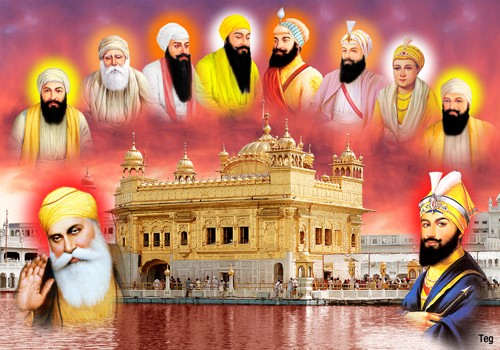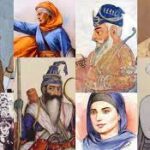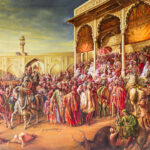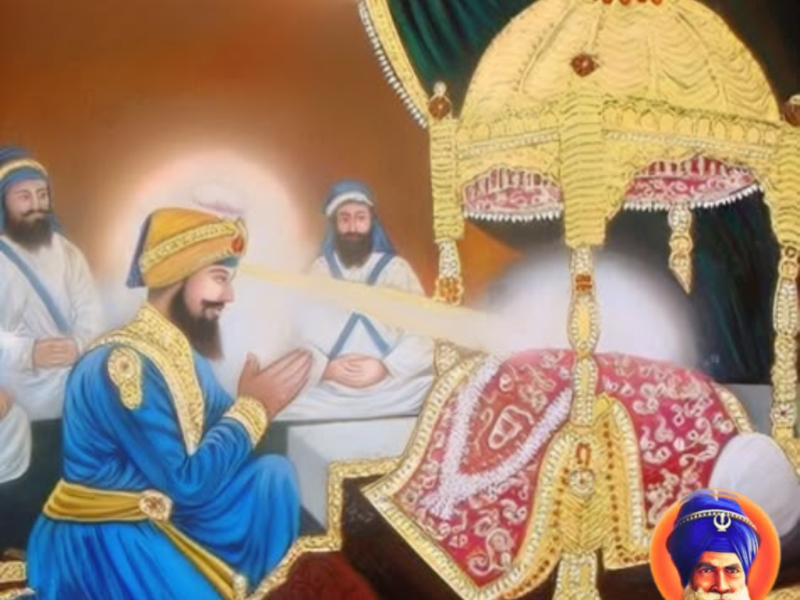Why are all the Sikh Gurus Males?
Since in Sikhi, Akal Purakh’s core is male, whereas all humans are thought to have female souls. In Mahala 5, Sri Guru Arjan Dev Ji says, “Gur Parmeshar Eko Jaan, Jo tis bhave so parvaan.” This implies that the Guru and the Transcendent Lord are One. As a result, the Gurus were intended to be male.
First from birth of Nanak Dev in 1469 until the death of Guru Gobind Singh, Sikhism, a transcendent faith that emphasises doing good in all aspects of life, spans over 250 years. Guru Gobind Singh’s position of guru was handed to the Sikh text, Guru Granth, at the moment of his death in 1708.
Sikhs see Sikhism’s ten gurus as embodiments of a single beacon of light that was passed down through one guru to the next. The word of god Siri Guru Granth Sahib currently holds that guiding light.
The Sikh texts define the position of women in Sikhism, stating that women are equal to males.
Sikhism’s teachings suggest that males and females have the very same souls and therefore have an equal right to nurture their spirituality and have equal opportunity of salvation.
All spiritual, artistic, societal, and secular activities are open to women, including leading religious assemblies, participating in the Akhand Path (continuous reading of the Holy Texts), performing Kirtan (denominational singing of hymns), and working as a Granthis.
As a conclusion, Sikhism was among the first major global faiths to announce that men and women are equal. “Guru Nanak preached the equality between women and men, and both he and the gurus who followed him urged men and women to participate fully in all aspects of Sikh worship and practise.”
Women’s roles in Sikh history have been documented, depicting them as equals to men in terms of service, commitment, sacrifice, and courage.
10 Guru’s of Sikhism:
1.Guru Nanak (1469-1538 AD)
Was a Sikh Guru who lived from 1469 to 1538 AD.- His key accomplishments include founding Sikhism, promoting Hindu-Muslim unity, opposing exceptions and workmenism, placing the highest value on equality, and establishing teaching associations.
2.Guru Angad (Lehna) Baba Shrichand (1538-1552 AD)
Guru Angad (Lehna) Baba Shrichand (1538-1552 AD) – Prominent work – The creation of Guru Nanak, the son of Angad, Guru Nanak’s tutor, who preached the Guru’s principles in basic words. The anchor system has been permanently installed. Humayun 1504 AD begins the introduction script. From Punjab, it was discovered in Angad.
3.Guru Amardas (1552-1574 AD)
The follower of Guru Angad, created the Sikh faith. Sati practises prohibited the use of narcotic substances, and he taught to be a family saint for his pupils, for whom 22 created gaddis. Due to Mr. Chandra’s protest, the location will be changed. In Punjab, Akbar visited the Guru, released him and his pupils from the journey, and established several villages in his daughter’s name. The Vaishnava sect’s members established the lavan system to keep Sikhs and Hindus from marrying.
4.Guru Ramdas (1574-1581 AD)
In 1577 AD, he had a big influence on Akbar. Amritsar was founded on 500 bighas of land with a natural pond, which has been given by Akbar.
5.Arjun Dev (Arjan Dev) Guru (1581-1606AD)
Guru Arjun (Arjan) Dev built the Golden Temple (Harmandir Sahib) at Amritsar, India, in 1604. He also authored and wrote to the Adi Granth.
On September 1, 1581, he was installed as the fifth guru at Goindwal, and he perished on May 30, 1606, in Lahore, Pakistan, at the age of 43.
6.Guru Hargovind (1606-45 AD)
Guru Hargovind (1606-45 AD) – Guru Hargovind (1606 The Guru turned the Sikhs into a military cult, demanding horses and weapons from their followers rather than donations, and allowing them to consume meat. The Guru built the Takht Akal Bunga and guarded Amritsar, and also providing spiritual and military education to the Sikhs, as a result of the Shah Jahan event.
7.Guru Hararaj (1645-1661)
who had been vanquished in Dr.’s Samudhgarh war, assisted him in escaping Punjab. Ramaray, Aurangzeb’s son, was summoned to the court by Aurangzeb. As a result, the Harikishan took over the throne from the second son.
8.Guru Harikishan (1661-1664 AD)
A throne struggle with his grand brother Ramrai.
9.Guru Teg Bahadar (Tegh Bahadur)
Guru Teg Bahadar, the ninth of the ten gurus, was apprehensive about leaving meditation and assuming the role of guru. He eventually gave his life to save Hindu Pandits from being compelled to convert to Islam.
On Aug. 11, 1664, he appointed guru at Baba Bakala, India, and perished on Nov. 11, 1675, at the age of 54, in Delhi, India.
10.Guru Gobind Singh (Guru Gobind Singh)
The Khalsa order was founded by Gobind Singh, the 10th guru. To defend Sikhs from forcible conversion to Islam, he lost his father, mother, kids, and his own life. He finished the Granth and bestowed the title of eternal guru upon it.
On Nov. 11, 1675, he became the 10th guru at Anandpur, and on Oct. 7, 1708, he died in Nanded, India.








